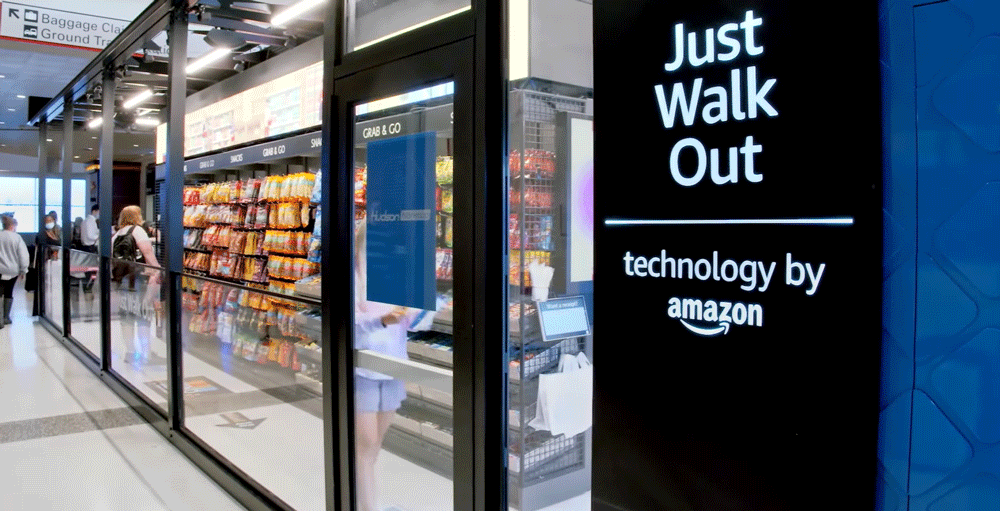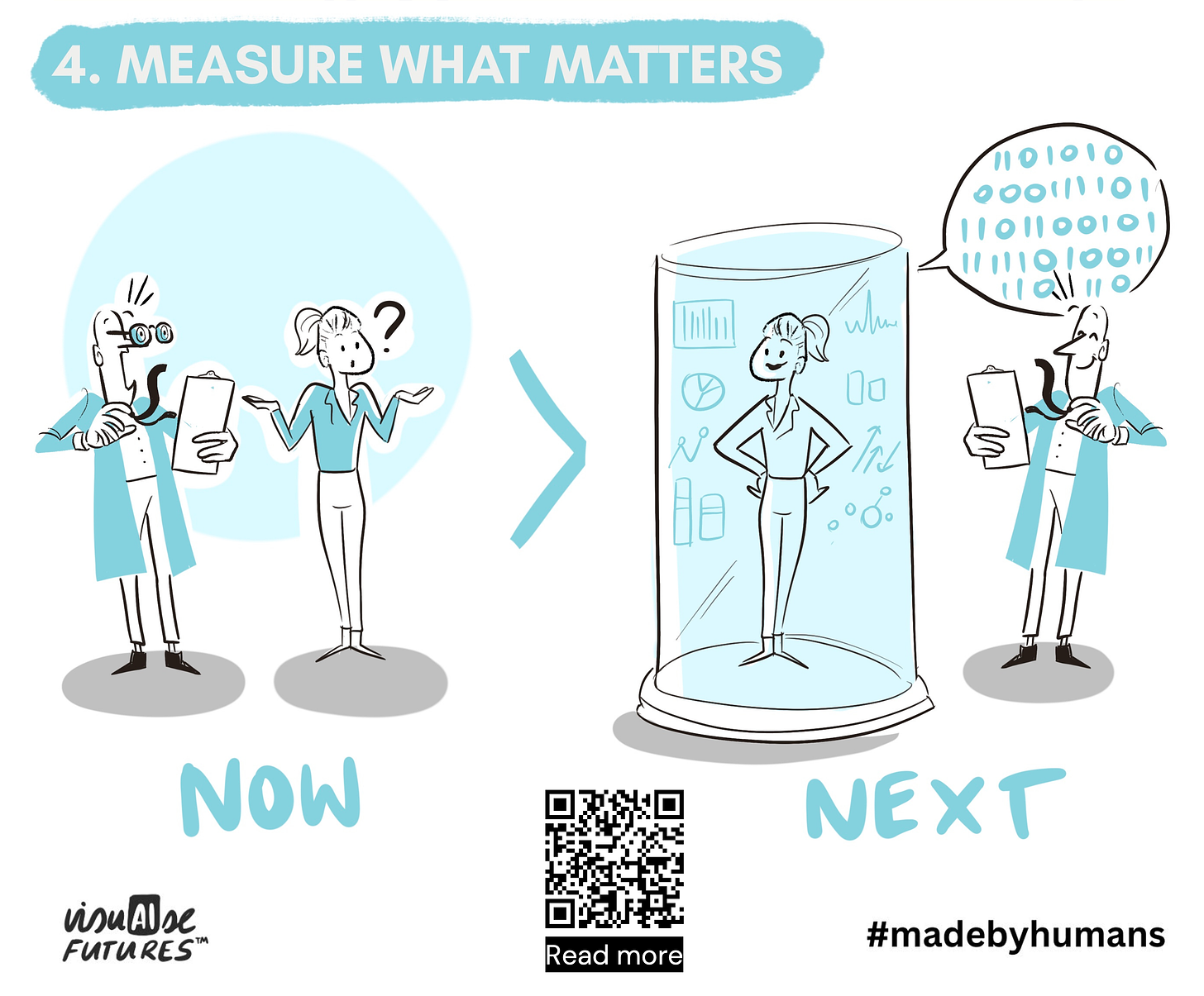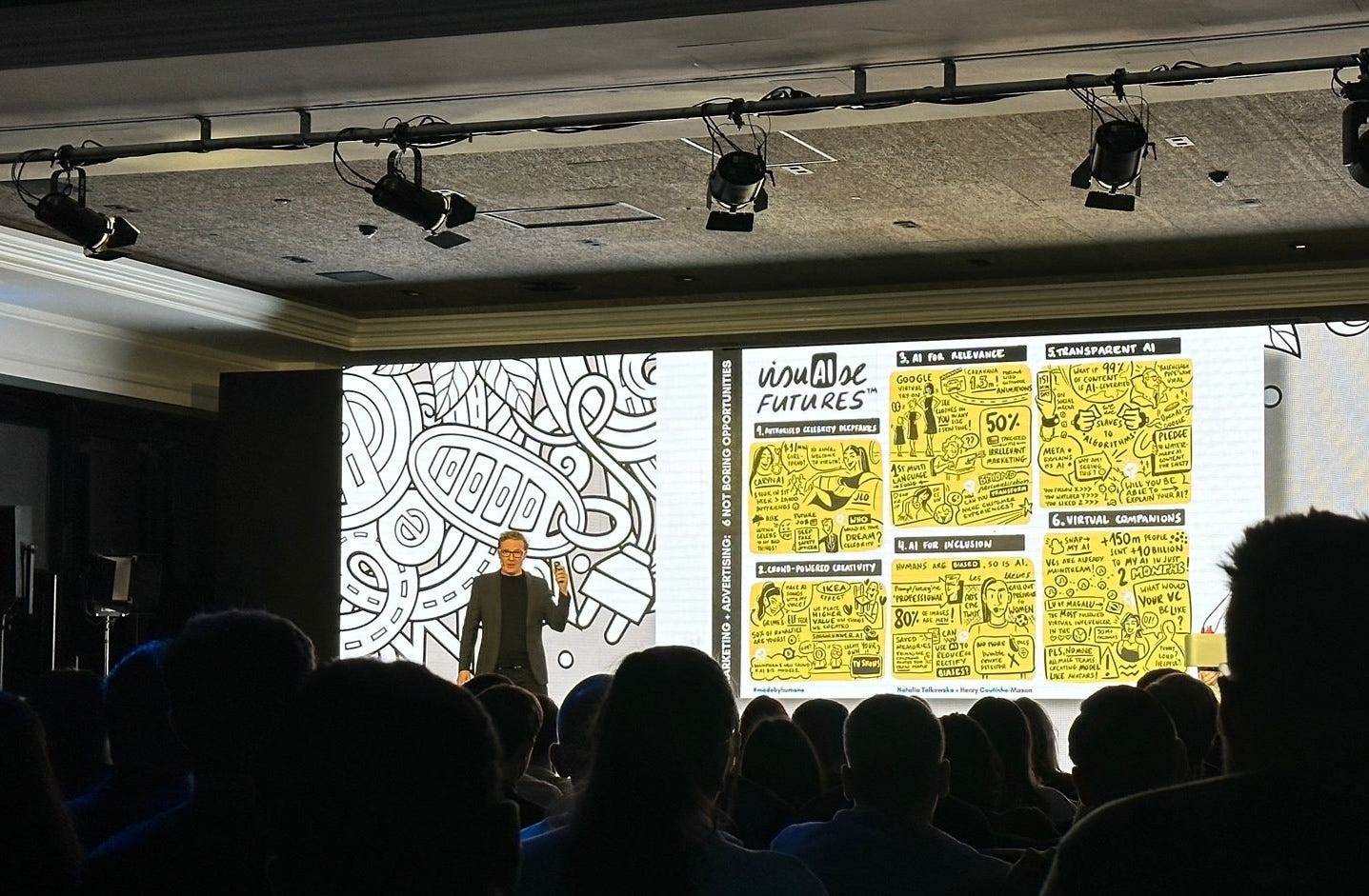Each week we go beyond the headlines and explore what AI will mean – for people, for businesses, the future of work, learning and culture, and more.
Use these examples to ask better questions about “where next?”, and why putting people’s needs at the heart of your AI strategy will be the key to success.
This week, learn from:
Amazon Go: AI…or Actually, just outsourced to India?
Hume: what if you had an emotion-sensing AI copilot?
X-rays and the potential ‘opportunistic’ benefits of AI.
🛒 Amazon Go: AI…or Actually, just outsourced to India?
While we try to focus on the positive opportunities that AI will present, we also couldn’t not include this bizarre story that will remind you not to take everything you read about AI at face value. Gizmodo reports (my emphasis):
Amazon is phasing out its checkout-less grocery stores with “Just Walk Out” technology… The technology allows customers to skip checkout altogether by scanning a QR code when they enter the store. Though it seemed completely automated, Just Walk Out relied on more than 1,000 people in India watching and labeling videos to ensure accurate checkouts. The cashiers were simply moved offsite, and they watched you as you shopped.
WTF?! Personally, I find this completely shocking. This isn't a small startup stretching the truth a little. Or a small, incidental feature. This is Amazon – one of the biggest companies in the world, with one of the most celebrated 'future of retail' innovations of the past decade?!
If this story is true, how is it not outright fraud? And the next obvious question – which other supposedly magical AI innovations are actually just human-powered sleights of hand?
I guess we shouldn't be surprised. After all, Amazon’s Mechanical Turk business was based on enabling its customers to source the lowest wage, most anonymous human labour to do micro tasks that couldn't quite be automated.
As awareness grows about the environmental and ethical footprint of AI – executives should ensure their AI suppliers can answer the following questions:
What's really happening under the hood?
How much human involvement is still required?
Where and who are those people?
🩻 X-rays and the potential ‘opportunistic’ benefits of AI.
However I often say if you want to feel optimistic about AI – look to healthcare, where claims are tested with more rigour and skepticism than in retail (thankfully people’s lives > people’s time).
Eric Topol’s brilliant Ground Truths newsletter introduced me to the fascinating concept of opportunistic AI.
A host of studies appear to show that by using AI to analyse medical scans (primarily X-rays and CT scans), we can detect a whole host of unrelated conditions, such as diabetes, certain cancers, cardiovascular and coronary artery diseases that the original scans weren’t looking for.
And the huge benefit is that these scans are very common – there are over 70 million chest X-rays and 20 million CT scans done in the US alone each year. As he says (my emphasis):
While we wouldn’t order a chest X-ray to determine CV risk, think of the large number of people who would get this information “free” as a readout from their scan.
No matter whether you work in healthcare or not, that’s a fascinating provocation:
💡 What if you used AI to analyse data you already have today? What opportunistic insights might it offer you, for “free”?
💞 Hume: what if you had an emotion-sensing AI copilot?
‘Empathetic AI’ startup Hume released an interactive demo of its AI voice technology that’s well worth checking out.
It claims that its models “measure upwards of 50 dimensions of emotional expression in nuanced facial and vocal behavior”, such as amusement, anger, boredom, confusion, distress, pain, surprise, and many more. Suggested use cases include being able to assess people’s emotional wellbeing from video recordings, more nuanced content moderation, and giving better feedback on customer service calls.
It’s exciting to imagine that in the future it will be normal – expected even – to have rich insights into people’s emotions during every digital interaction.
But I was especially struck by the quote from Moses Oh, a research engineer at Hume – “I get to solve problems no one imagined five years ago… I get to experience technologies no one will be able to live without in five years.”
It’s a brilliant and profound way to think about this kind of new technology, and one that’s well worth flipping into a question for your team:
💡 How could we use ‘emotional AI’ to create customer and employee experiences that seem magical today, but that people won’t be able to imagine living without in 5 years?
Want some ideas to start you off? Here’s a few from my Trend Analyst GPT :)
About VisuAIse Futures
VisuAIse Futures is a graphic collaboration between 👩🎨 Natalia Talkowska and 🕵🏻♂️ Henry Coutinho-Mason – two curious humans with 20+ years collective experience of helping large organisations navigate change.
We love helping companies increase the reach and impact of their thinking, so if you want to bring us to run a workshop at your next AI event or meeting, and co-create a custom graphic for your organisation – then let’s chat!
A few upcoming sessions & events:
GenAI4Pharma, London
AI:CX, Brazil
Future Hospitality Summit, Saudi Arabia
Climate Impact Summit, London
Knowledge Transfer Partnership, Bournemouth
“Inspiring, energetic, and entertaining. Henry's session for 2,000 senior executives from a Fortune 100 healthcare company received the highest rating from the attendees.” Brent Turner, SVP Head of Strategy, Cramer Events







